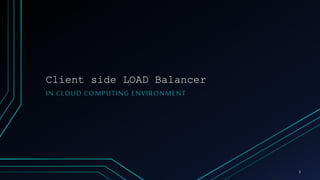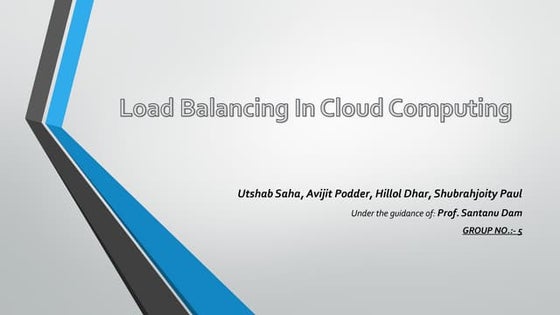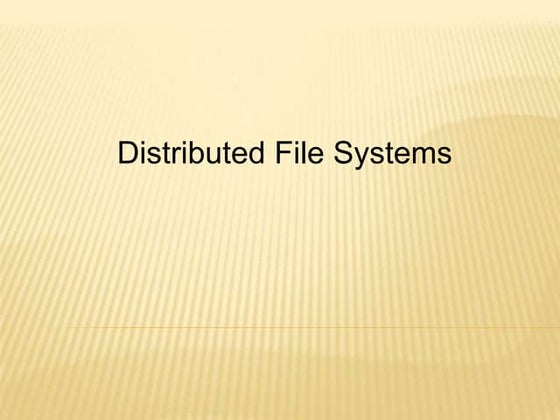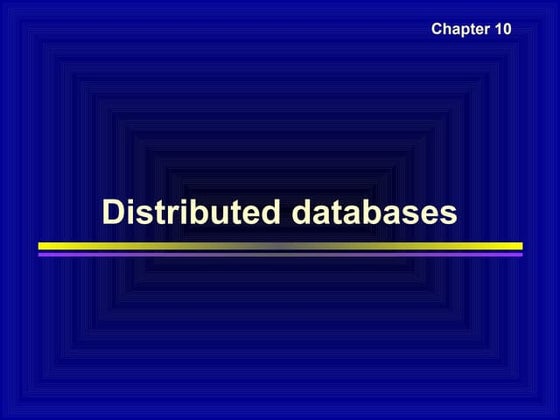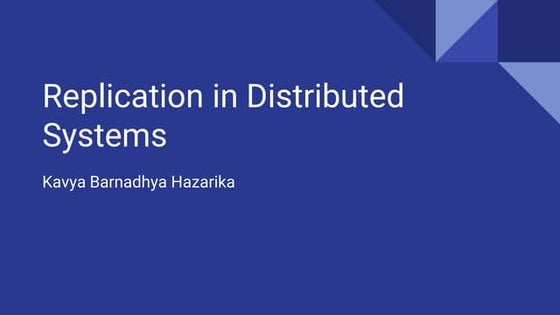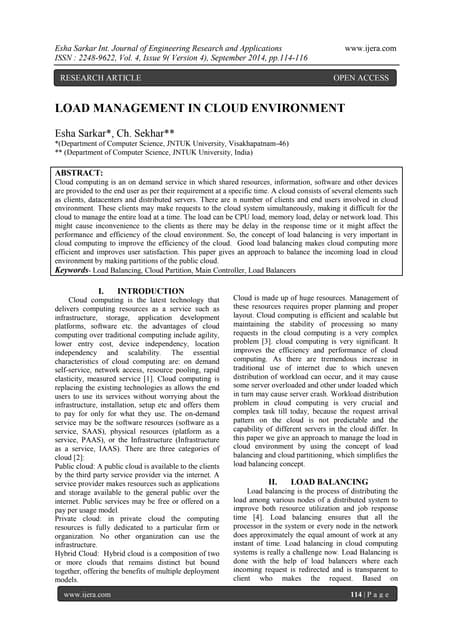LOAD BALANCING ALGORITHMS
- 1. Client side LOAD Balancer IN CLOUD COMPUTING ENVIRONMENT 1
- 2. 2
- 3. INDEX 1. Abstract 2. Motivation 3. Cloud Architecture 4. Load BalancingAlgorithms 5. Client Side Load Balancing 6. CONCLUSION 7. REFERENCES 3
- 4. ABSTRACT ŌĆó The concept of Cloud computing has significantly changed the field of parallel and distributed computing systems today. ŌĆó Cloud computing enables a wide range of users to access distributed, scalable, virtualized hardware and/or software infrastructure over the Internet. 4
- 5. ABSTRACT ŌĆó Load balancing is a methodology to distribute workload across multiple computers, or other resources over the network links to achieve optimal resource utilization, maximize throughput, minimum response time, and avoid overload. 5
- 6. ABSTRACT ŌĆó With recent beginning of technology, resource control or load balancing in cloud computing is main challenging issue. ŌĆó Efficient load balancing scheme ensures efficient resource utilization by provisioning of resources to cloud userŌĆÖs on-demand basis in pay-as-you-say-manner. ŌĆó Load balancing in the cloud computing environment has an important impact on the performance. ŌĆó Good load balancing makes cloud computing more ef’¼ücient and improves user satisfaction. 6
- 7. MOTIVATION ŌĆó PROBLEM I. Cloud Computing is a new trend emerging in IT environment with huge requirements of infrastructure and resources. II. Availability of cloud systems is one of the main concerns of cloud computing. The term, availability of clouds, is mainly evaluated by type of information comparing with resource scaling. III. Work load control is crucial to improve system performance and maintain stability. PROBLEM SOLUTION RESULT 7
- 8. MOTIVATION ŌĆó SOLUTION I. Load balancing in cloud computing provides an efficient solution to various issues residing in cloud computing environment set-up and usage. II. Load balancing must take into account two major tasks, one is the resource provisioning or resource allocation and other is task scheduling in distributed environment. PROBLEM SOLUTION RESULT 8
- 9. MOTIVATION ŌĆó RESULT Efficient provisioning of resources and scheduling of resources as well as tasks will ensure: I. Resources are easily available on demand. II. Resources are efficiently utilized under condition of high/low load. III. Energy is saved in case of low load (i.e. when usage of cloud resources is below certain threshold). IV. Cost of using resources is reduced. PROBLEM SOLUTION RESULT 9
- 10. CLOUD COMPUTING ŌĆó A Cloud computing is emerging as a new paradigm of large scale distributed computing. ŌĆó It has moved computing and data away from desktop and portable PCs, into large data centres. 10
- 11. CLOUD COMPUTING ŌĆó Cloud Computing is made up by aggregating two terms in the field of technology. ŌĆó First term is Cloud and the second term is computing. 11
- 12. CLOUD COMPUTING ŌĆó What is Cloud? ŌĆó Cloud is a pool of heterogeneous resources. ŌĆó It is a mesh of huge infrastructure and has no relevance with its name ŌĆ£CloudŌĆØ. ŌĆó Infrastructure refers to both the applications delivered to end users as services over the Internet and the hardware and system software in data centres that is responsible for providing those services. 12
- 14. CLOUD COMPUTING SAAS ŌĆó E-Mail ŌĆó ERP ŌĆó CRM ŌĆó Collaborative PAAS ŌĆó Application Development ŌĆó Web ŌĆó Decision Support ŌĆó Streaming IAAS ŌĆó Caching ŌĆó File ŌĆó System Management ŌĆó Networking ŌĆó Security 14
- 15. TYPES OF CLOUD COMPUTING ŌĆó PRIVATECLOUD ŌĆó For people who are the type to keep everything within armsŌĆÖ reach and on a leash -- dogs, children, keys, you name it. ŌĆó Afraid of releasing your data to public cloud? ŌĆó Need to constantly monitor it? ŌĆó These chained-in, restrained cloud environments are protected behind a firewall 15
- 16. TYPES OF CLOUD COMPUTING ŌĆó PUBLIC CLOUD ŌĆó If private clouds are like pets on leashes, public clouds are wild animals roaming free. ŌĆó Public clouds owners are those who are willing to trust data to off-premises cloud providers. ŌĆó They gain the benefits of that pay-as-you-go services so you only pay for what you use 16
- 17. LOAD BALANCING ŌĆó Load balancing is a relatively new technique that facilitates networks and resources by providing a maximum throughput with minimum response time. ŌĆó Dividing the traffic between servers, data can be sent and received without major delay. ŌĆó Different kinds of algorithms are available that helps traffic loaded between available servers. ŌĆó Without load balancing, users could experience delays, timeouts and possible long system responses. 17
- 18. Cost effectiveness Priority Scalability and flexibility In order to balance the requests of the resources it is important to recognize a few major of load balancing algorithms GOALS 18
- 19. LOAD BALANCING ALGORITHMS STATIC ALGORITHMS DYNAMIC ALGORITHMS ŌĆó Cloud provider installs heterogeneous resources. ŌĆó resources are flexible in dynamic environment. ŌĆó Cloud cannot rely on the prior knowledge whereas it takes into account run-time statistics. ŌĆó Cloud provider installs homogeneous resources. ŌĆó Resources in the cloud are not flexible ŌĆó Cloud requires prior knowledge of nodes capacity, processing power , memory, performance and statistics of user requirements. 19
- 20. Start Request a connection to a resource Stop Chose the next available resource Retrieve highest priority conn. string Return resource to requestor Collect usage patterns Data resource available More available resource YES YES NO NO 20
- 21. CLIENT SIDE LOAD BALANCER USING CLOUD COMPUTING 21
- 22. CLIENT SIDE LOAD BALANCER ŌĆó Load balancer forwards packets to web servers according to different workloads on servers. ŌĆó However, it is hard to implement a scalable load balancer because of both the ŌĆ£cloudŌĆÖs commodity business model and the limited infrastructure control allowed by cloud providers.ŌĆØ ŌĆó Client-side Load Balancer (CLB) solve this problem by using a scalable cloud storage service. ŌĆó CLB allows clients to choose back-end web servers for dynamic content although it delivers static content. 22
- 23. EXISTING SOLUTIONS ŌĆó Hardware based load balancer- to handle high level of load ŌĆó Software based load balancer- for generic servers Load Balancer ŌĆó Local DNS Server ŌĆó Can hand out diff. IP address to diff. DNS Servers DNS Load Balancing ŌĆó One can fully control infrastructure ŌĆó Do not impose: Single Performance bottleneck, expensive Hardware, Lack of adaptiveness Layer 2 Optimization 23
- 24. EXISTING SOLUTIONS : DRAWBACKS ŌĆó Hardware based load balancer- Expensive ŌĆó Software based load balancer-Not ScalableLoad Balancer ŌĆó Local DNS Server ŌĆó lack of Adaptiveness and Granularity DNS Load Balancing ŌĆó One can fully control infrastructure ŌĆó this ability could open doors for security exploits. Layer 2 Optimization 24
- 25. PROPOSED SYSTEM ŌĆó architecture has no single point of scalability bottleneck ŌĆó communication flows between the browser and the chosen back-end web server. Compared to Software Load Balancer ŌĆó architecture has a finer load balancing granularity and adaptiveness. ŌĆó client's browser makes the decision. Compared to DNS Load Balancing ŌĆó It achieve high scalability without requiring sophisticated control on the infrastructure as layer 2 optimization does Compared to Layer 2 Optimization 25
- 26. ARCHITECTURE One Web Server Proxy Normal Web Contents S3 Static Page Web Server Load File LB JavaScript Client Browser 26
- 27. EXPLANATION For each dynamic page, we create an anchor static page. This anchor page includes two parts. ŌĆó The first part contains the list of web servers' IP addresses and their individual load (such as CPU, memory, network bandwidth, etc.) information. They are stored in a set of JavaScript variables that can be accessed directly from other JavaScript code. ŌĆó The second part contains the client-side load balancing logic, again written in JavaScript. Static Page Web Server Load File LB JavaScript 27
- 29. AMAZON - S3 (SIMPLE STORAGE SERVICE) ŌĆó S3's domain hosting capability is used, which maps a domain (by DNS aliasing) to S3. We create a bucket with the same name as the domain name (e.g., www.website.com). ŌĆó When a user accesses the domain, the request is routed to S3 and S3 uses the host header to determine the bucket from which to retrieve the content. 29
- 30. SAMPLE ANCHOR STATIC PAGE 1. <html> 2. <head><title></title> 3. <script type="text/javascript"> 4. <!-- 5. // the load balancing logic 6. </script> 7. <script type="text/javascript"> 8. // the server list and load 9. // information in JavaScript 10. // variables 11. </script></head> 12. <body onLoad="load();"> 13. <span id="ToBeReplaced"> </span> 14. </body></html> 30
- 31. WORKING ŌĆó When a client browser loads an anchor page, the browser executes the following steps in JavaScript: 1. Examine the load variables to determine to which web server it should send the actual request. The current algorithm randomly chooses a web server where the probability of choosing any one is inversely proportional to its relative load. 31
- 32. WORKING 2. JavaScript sends a request to a proxy on the target web server. The JavaScript sends over two pieces of information encoded as URL parameters. First, it sends the browser cookie associated with the site (document.cookie). Second, it sends the URL path (location.pathname). One Web Server Proxy Normal Web Contents 32
- 33. WORKING 3. The proxy uses the cookie and URL path to re-construct a new HTTP request; and sends the request to the actual web server. 4. The web server processes the request; invokes dynamic script processor as necessary; and returns the result back to the proxy. 5. The proxy wraps around the result in a JavaScript. 6. The client browser executes the returned JavaScript from the proxy; updates the page display; and updates the cookies if a set- cookie header has been returned. 33
- 34. SAMPLE JAVASCRIPT ŌĆó The JavaScript returned from the proxy looks like the following. 1. function page() { 2. return "<HTML page content>"; 3. } 4. function set-cookie() { 5. <set cookie if instructed 6. by web server> 7. } 34
- 35. WORKING ŌĆó As described above, the goal of the load balancing logic is to choose a back-end web server based on the load, send the client request (cookie along with URL path) to the proxy, receive the returned JavaScript and update the current HTML page. 35
- 36. Service specific load balancing ADVANTAGES Wide area services Scalable Services Client Code Portability Parallelism Fault Tolerance 36
- 37. CONCLUSION ŌĆó A cloud is an attractive infrastructure solution for web applications since it enables web applications to dynamically adjust its infrastructure capacity on demand. ŌĆó A scalable load balancer is a key building block to efficiently distribute a large volume of requests and fully utilize the horizontally scaling infrastructure cloud. ŌĆó However, as we pointed out, it is not trivial to implement a scalable load balancer due to both the cloud's commodity business model and the limited infrastructure control allowed by cloud providers. ŌĆó In this study, the Client-side Load Balancing (CLB) architecture uses a scalable cloud storage service such as Amazon S3. 37
- 38. CONCLUSION ŌĆó Through S3, CLB directly delivers static contents while allowing a client to choose a corresponding back-end web server for dynamic contents. ŌĆó A client makes the load balancing decision based on the list of back-end web servers and their load information. ŌĆó CLB uses JavaScript to implement the load balancing algorithm, which not only makes the load balancing mechanism transparent to users, but also gets around browsers' cross-domain security limitation. ŌĆó Our evaluation shows that the proposed architecture is scalable while introducing a small latency overhead. 38
- 39. REFERENCES ŌĆó Amazon Web Services. Amazon Web Services (AWS). http://aws.amazon.com. ŌĆó F5 Networks. F5 Networks. http://www.f5.com. ŌĆó Google Inc. Google Search Engine. ŌĆó IEEE Paper on ŌĆśClient Side Load Balancer Using CloudŌĆÖ by S. Wee & H. Liu 39
